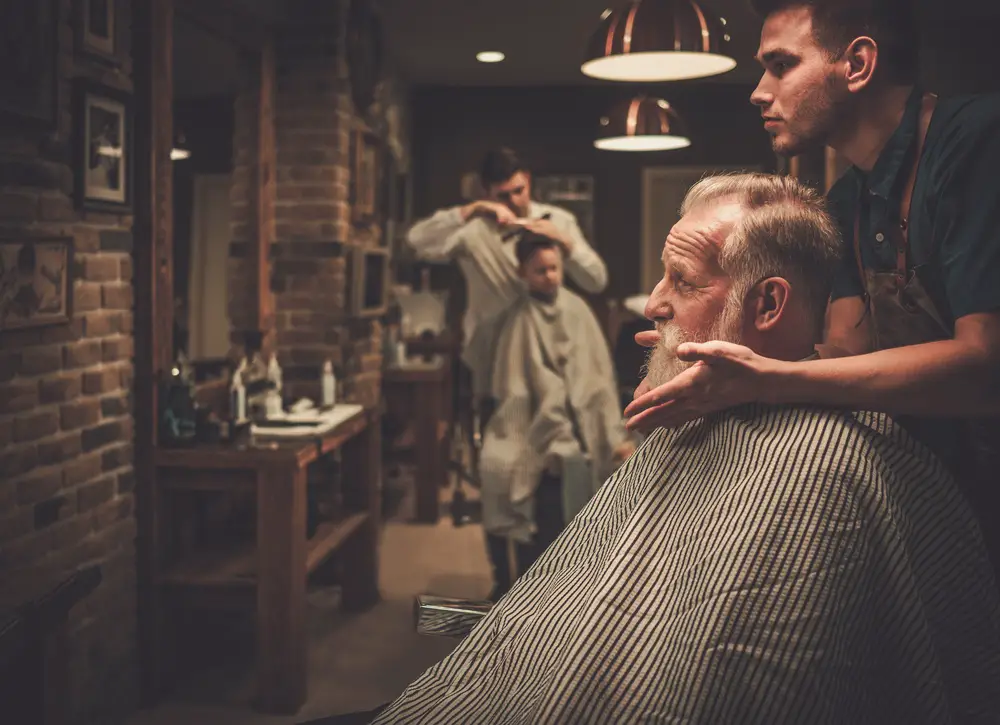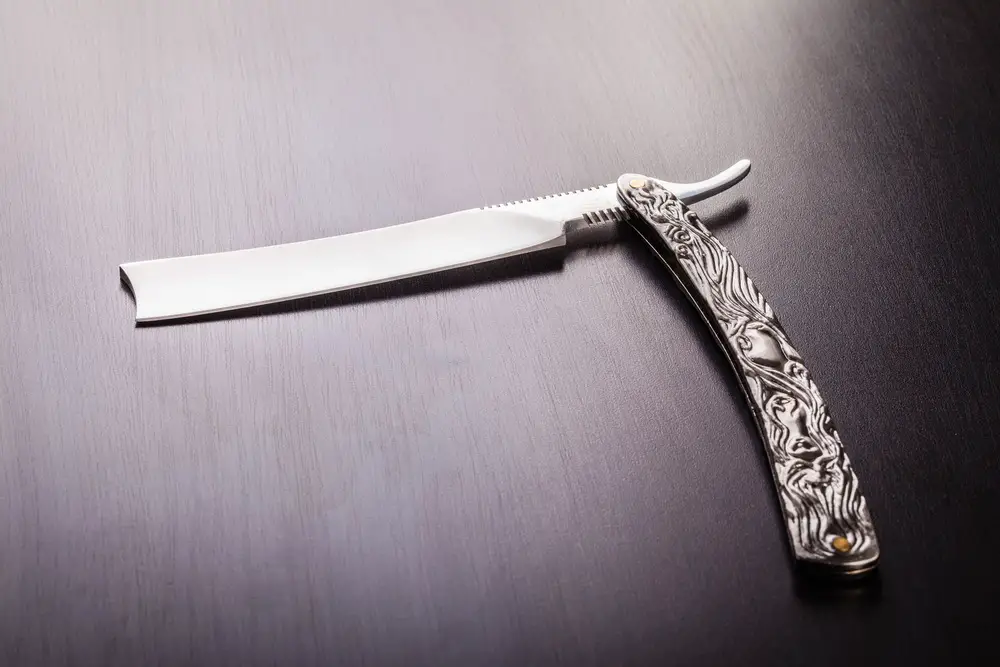Vintage straight razors are sometimes the very best.
Did you know that an average bearded man spends 45 days of their lifetime shaving? And a single straight razor is able to do all that shaving if given the care it deserves. That is not all. This razor can serve several generations owing to their stainless steel build, which is a durable metal that does not rust.
Because of this, straight razors are an investment every wet shaver should have in their shaving kit. Yes, straight razors might look delicate, come at an exorbitant cost, and offer a steep learning curve for the user, but their value in the shaving industry is unparalleled.
There are brand new straight razors on the market today that you could buy. However, we cannot run away from the love for vintage in modern society. More and more people want to enjoy the feel of more antique shaving equipment. Some individuals collect them as a hobby.
Vintage Straight Razors
Older straight razors come at a less affordable cost than brand new ones, because of the work they need to become useful. You can’t just buy and start using these tools. You have to restore them. Think about vintage straight razor restoration as an intricate exercise. Anyone can do it; novice shavers and collectors alike. But how should you do it?
Find a Vintage Straight Razor First
Before you learn how to restore a vintage razor, let us first find out where to get these shaving instruments. Vintage straight razors are not just any common old product you get on the market. Just like other estimable products from the past, you’ll you’ll have to search hard to find yourself one. People in Germany, England, and Sweden might have easier access to these shaving tools from their local vintage stores. Those from far places might have to look for them from far places. Some sellers package them in twos or even threes. You can buy two of these razors separately to try your restoration art. This way, if one gets damaged, you can learn from your mistakes and do better on the other.
You might be looking for these items only to find out that your family has some already. Check with your grandfather or an uncle if they have them in the shaving tools collection. Even if you don’t get an old straight razor, there are chances that you’ll find other shaving equipment from them that you could use. Do you have antique shops in your town? That is the best place to look for these razors. Don’t just window shop. Ask the storekeepers if they have them because they are small and could be hard to notice on the shelves. They are often displayed close to other men’s products like watches, eye-glasses, and wallets.
If the stores have nothing to offer, don’t worry. You have the internet, where you can shop for anything. Some online stores have a lot of these items. Just reach out to search engines like Google and search for whatever you are looking for, and voila!

Then Get Your Restoration Shopping List Right
You have to buy other important items besides a vintage straight razor to help. To be successful in restoring a rusty straight razor, you should have hand tools for the process. Some of the things to buy include:
- Wet/Dry Sandpaper
- Metal brass
- A flat file
- Hammer(s)
- Metal polish
- Rags
- Diameter washers
- Wire cutter
- Whetstone
We could include power tools in the list, but they are not necessary. You can still make a rusty razor to look decent using the tools above. If you decide to use such a machine anyway, be sure to follow the manufacturer’s instructions. Protect yourself to avoid hurting yourself. Don’t get the metal too hot because you will compromise its toughness. Dunk it in water in case the metal gets overheated.
Don’t Just Pick Any Vintage Straight Razor
Even after searching desperately for vintage straight razors, you need to be careful not to buy what will be harmful to you. Unlike buying a new product, you need to be extra keen to get the best out of the razor markets.
The first thing to consider is the brand. Get those ones from reputable manufacturers like Dovo, Puma, Winchester, Imperial, Waterville, among others. Most brands from Europe top the list of the best blades in the shaving industry. Avoid products that have no make, origin mark, and names. You don’t want to purchase a rusty piece of metal that won’t meet your expectations. Some vintage collectors have picked such blades and made good out of them, but that doesn’t mean you’ll have the same experience.
The blade. The fact that you are going to restore a razor doesn’t mean you have pick one that is full of rust. Not all vintage straight razors are rusty. Sometimes the corrosion penetrates into the blade leaving it weak. Don’t choose discolored razors or those with burn marks as well. You also don’t want a chipped blade, particularly on the edges. Little chips are acceptable, but anything beyond three millimeters is not good. If the razor has a lot of scratching or flattened at the spine, that shows they’ve gone through a lot of honing, which makes them a bad choice.
The scales are also a consideration you should not forget. They are made with varied materials – wood, bone plastic, acrylic, ivory, gold, among others. Obviously, the quality of the handle will also impact the price. Some vintage razors have scales that are totally damaged and will require replacement.
How much will it cost? Vintage straight razors can set you back between $5 and $50. There are more expensive options because of the handle quality. Whatever razor you find, chances are high that they will be dirty.

Understand Their Anatomy
If you are going to be effective at restoring a straight razor, you should know the anatomy of it. Find out which parts are the spine, point, tang, edge, scales, and pin. The grinds come in varied shapes like a full wedge, quarter-hollow, half hollow, and full hollow. If you are new, the hollow ground is the best choice.
Restoring Vintage Straight Razors
You have two points to cover when restoring vintage straight razors: cosmetics and cutting edge. The process is quite straightforward.
For the cosmetics, take your sandpaper and rub it against the blade to eliminate natural darkening, patina, and rust. You want to do this until the blade feels smooth against your hand. It requires patience to achieve the desired results.
You can then apply the metal polish to ensure your blade looks shiny. This process will cover most of the flaws that might be left on it. Do the same for the scale and access the hard to reach areas using cotton swabs. It is time to disinfect the vintage razor. Use alcohol or barbicide for this purpose. Never sand or buff the edge of the blade.
It is now time to use the hammers. Razor scales are normally two pieces joined together. They might have loosened over time. Place one side of the pin on a hard surface and tap the other end with your hammer. Be gentle because force can damage the handle totally. Remember the straight razor is old and could be fragile because of it. If you can’t get rid of the looseness with the hummer, dismember the handle from the blade and redo the fixing as you place the diameter washers.
You can now sharpen the blade to ready it for service. Start by cleaning the stone. A whetstone will require lubrication to do the work well. Use water, lather, or oil for this. Let the stone lying on a flat surface with the coarse side facing up. You can then place the blade on the stone with the edge and spine touching it. Begin the sharpening processes while you hold the shank. Turn it so it lies on its back, and proceed with the honing. Do this with moderate pressure until it becomes sharp. About 10 strokes on each side are enough to make it sharp enough for use. Then utilize your rags to wipe it clean and dry.
In case the restoration process doesn’t give the desired results, there are two things that might be causing the problem. First, it is possible that you’ve not followed the instructions as we suggest above. Second, the straight razor might be in exceptionally poor condition. In this case, it’s better given to professionals to restore.

That’s it
Some experts make restoring a blade look like rocket science, but it actually isn’t too hard. While some straight razors require intense professional restoration, others are simple to handle on your own at home. As long as you have the tools, you’ll be good to go. Ensure you choose a razor with a blade that is not badly damaged. You can buy two razors just in case the first one doesn’t turn out right. This guide will give you a great place to start your restoration journey.
While you’re here, don’t miss our guide to the 10 best razors for beard shaping.